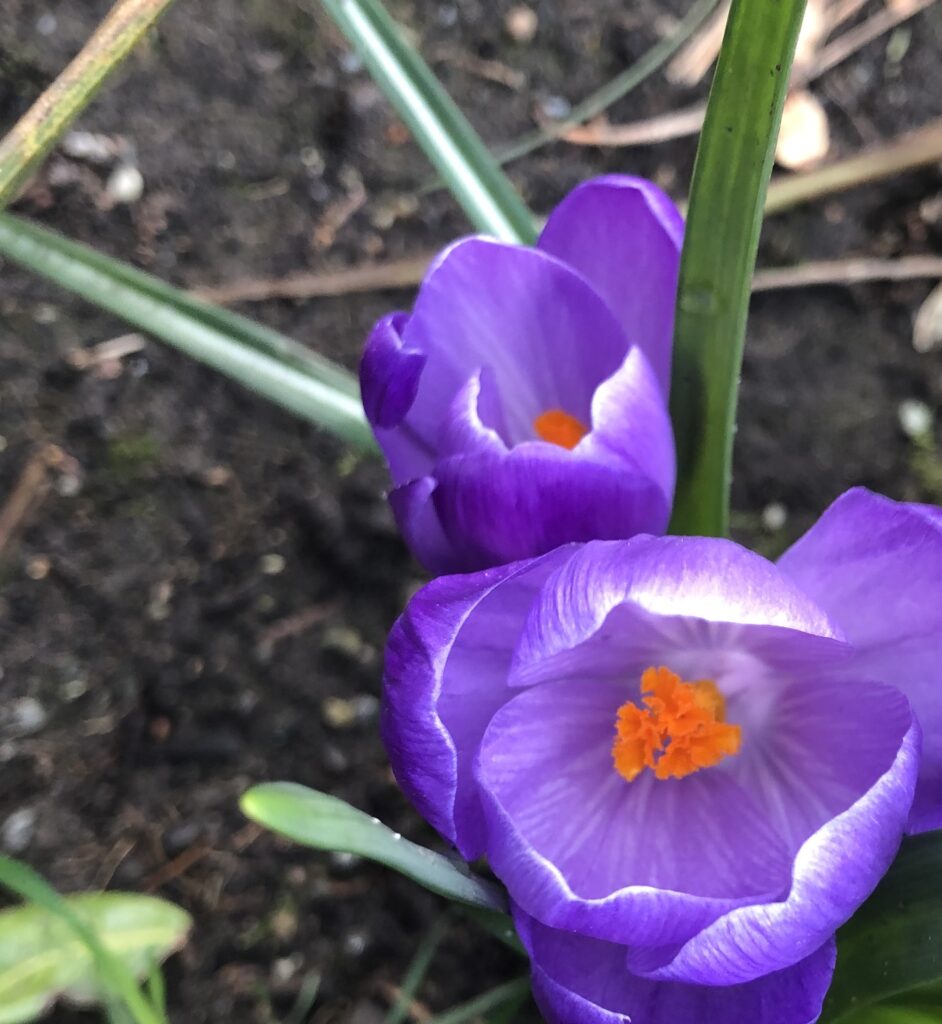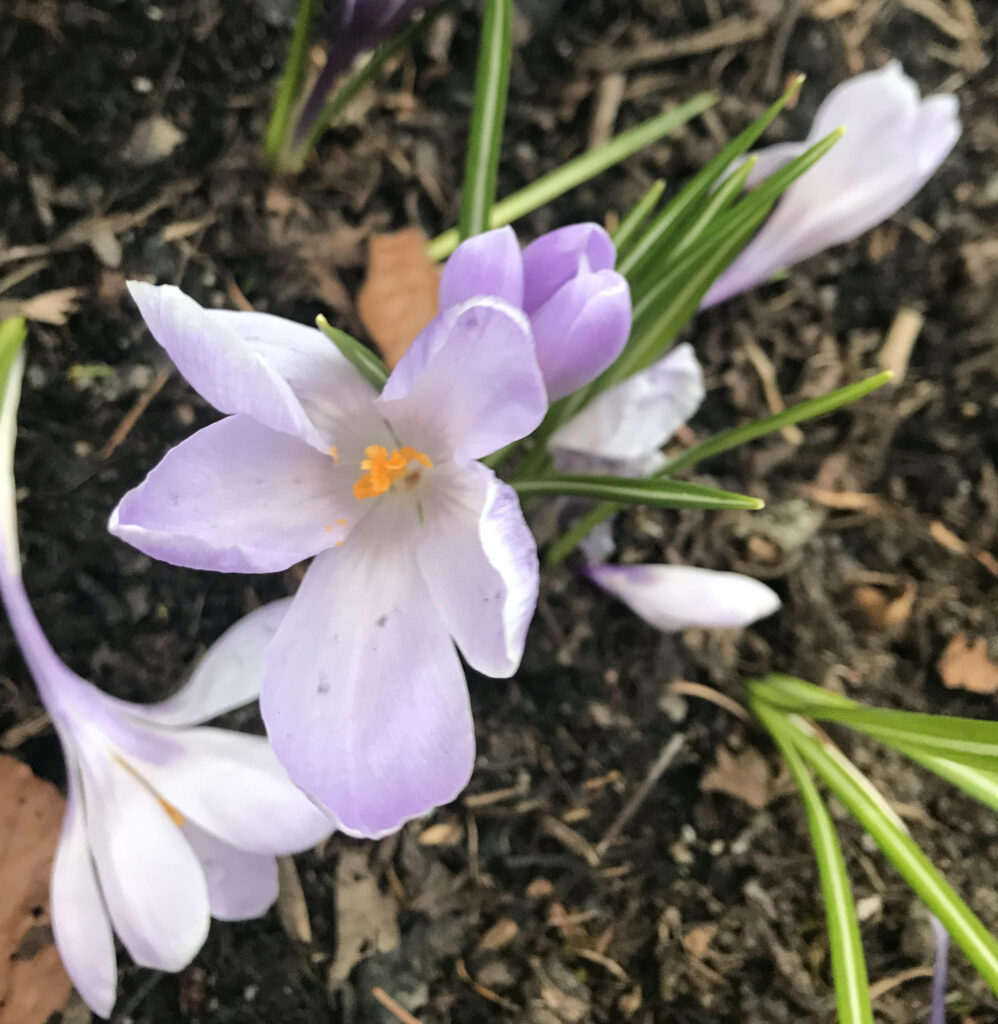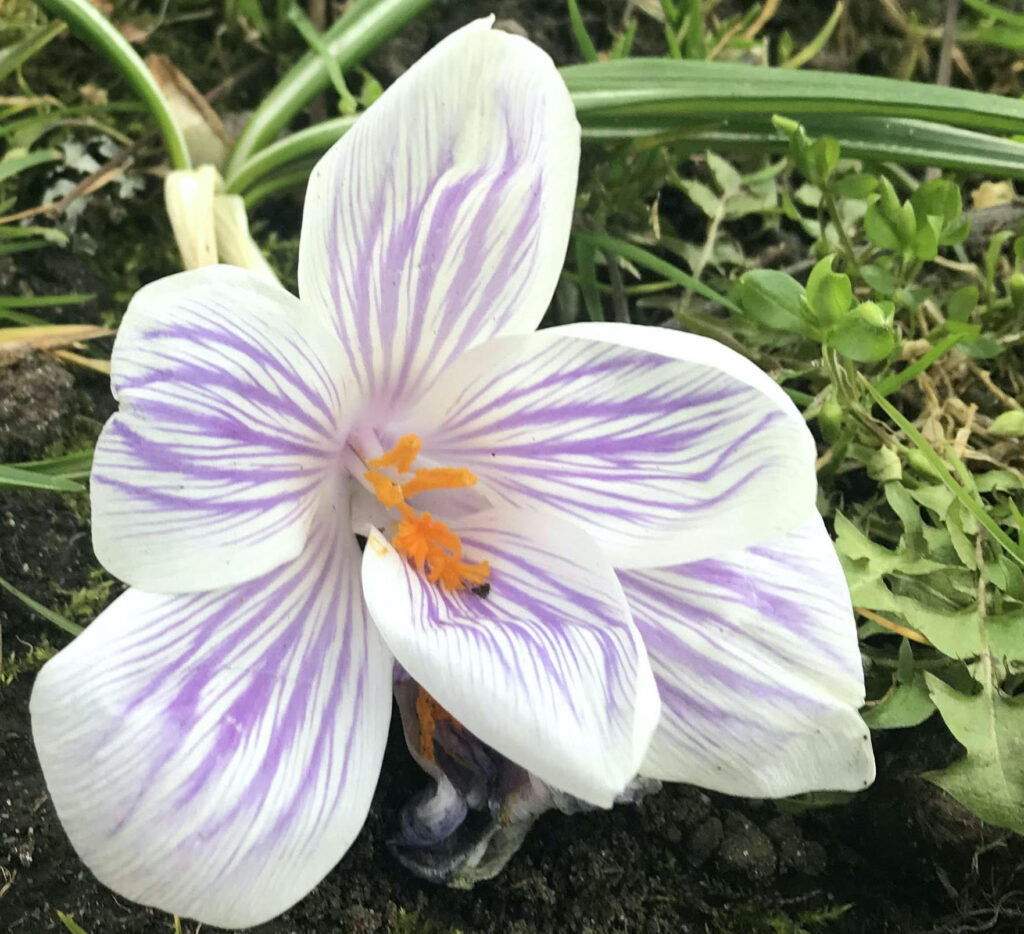Crocus (Crocus spp.)

A familiar set of flower species in the Iris family, the genus Crocus is known well throughout the world. This genus is made up of roughly 75 species, although note that species consensus is vague. Crocuses are famous for their tendency to appear before many other flowering plants in the early spring. Blooming may even occur in some areas when snow is still present. However, with so many species in many climates, the genus has a mixed set of blooming times, occurring not just in early spring, but fall and winter as well. The delicate flowers are recognizable for their bright purple, yellow, lavender, cream or white colors. Interestingly, crocuses are often identified by a white stripe along their grass-like, green leaves (see photos). The flowers do not have significant stems, argued nonexistent by some. General language refers to the plant growing from bulbs, but this is not entirely correct. The true “bulb-like” structures are called corms and are regrown every year. The plant usually grows in clumps naturally.

The genus Crocus is widely distributed, and there are native species to southern, central and eastern Europe (such as the Mediterranean and the Alps), the Middle East, Asia (such as China) and North Africa. It has also become dispersed throughout North America. The plant does well in a variety of habitats such as meadows and woodland edges, and there are about 30 species in cultivation today. The blooming seasons of crocuses depend on habitat; those that bloom in the fall, winter and early spring all require different conditions of the season following (e.g. cold winter for spring blooming). As the years progress, each plant will usually produce a greater amount of flowers than the one prior.

Crocuses provide environmental and societal benefits. Crocus flowers provide rich pollen to bees, especially plants from large corms. From the species Crocus sativus, an autumn crocus, the orange material from tip of the pistils is used to create saffron. Saffron is a popular spice, dye and medicinal component. It is significant to mention that another type of flower is also commonly called “autumn crocus” (Colchicum spp.); it belongs to a completely different family (Colchicacaceae), and is toxic. A major difference between these genera is that Crocus spp. have three stamens and one 3-parted style, while Colchicum spp. have six stamens and three styles. Other differences can be found at American Meadows and Wisconsin Horticulture. Crocus flowers do not last forever, and will disappear at the end of the growing season to reveal the seed pods and a longer grown stem.
For more information, visit Longfield Gardens, Encyclopaedia Britannica, Gardening Know-How, Genetic Resources of Saffron and Allies, Pacific Bulb Society, American Meadows, Ohio State University, Richmond News and Farm Fresh BC.


